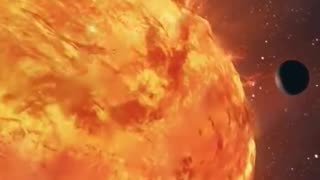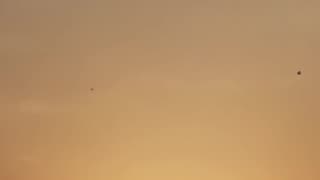133 on the sun
This video chronicles solar activity from Aug. 12 to
Dec. 22, 2022, as captured by NASA's Solar Dynamics
Observatory (SDO). From its orbit in space around
Earth, SDO has steadily imaged the Sun in 4Kx 4K
resolution for nearly 13 years. This information has
enabled countless new discoveries about the
workings of our closest star and how it influences the
solar system.
With a triad of instruments, SDO captures an image of
the Sun every 0.75 seconds. The Atmospheric
Imaging Assembly (AIA) instrument alone captures
images every 12 seconds at 10 different wavelengths
of light. This 133-day time lapse showcases photos
taken at a wavelength of 17.1 nanometers, which is an
extreme-ultraviolet wavelength that shows the Sun's
outermost atmospheric layer: the corona. Compiling
images taken 108 seconds apart, the movie
condenses 133 days, or about four months, of solar
observations into 59 minutes. The video shows bright
active regions passing across the face of the Sun as it
rotates. The Sun rotates approximately once every 27
days. The loops extending above the bright regions
are magnetic fields that have trapped hot, glowingplasma. These bright regions are also the source of
solar flares, which appear as bright flashes as
magnetic fields snap together in a process called
magnetic reconnection.
While SDO has kept an unblinking eye pointed toward
the Sun, there have been a few moments it missed.
Some of the dark frames in the video are caused by
Earth or the Moon eclipsing SDO as they pass
between the spacecraft and the Sun. Other blackouts
are caused by instrumentation being down or data
errors. SDO transmits 1.4 terabytes of data to the
ground every day. The images where the Sun is
off-center were observed when SDO was calibrating
its instruments.
SDO and other NASA missions will continue to watch
our Sun in the years to come, providing further
insights about our place in space and information to
keep our astronauts and assets safe.
-
 26:40
26:40
The Secret Kindergarten
8 months agoThe Sun
251 -
 0:07
0:07
LIVNASA
9 months agoSUN
6 -
 1:57:23
1:57:23
Ixenthurkear
10 months agoSun Haven
71 -
 2:01:33
2:01:33
Ixenthurkear
10 months ago $0.02 earnedSun Haven
61 -
 0:22
0:22
Islanders13
5 months ago $0.01 earnedThe sun
27 -
 2:08:19
2:08:19
Ixenthurkear
9 months agoSun Haven
42 -
 0:13
0:13
Creativevideo
1 year agoSun
28 -
 0:30
0:30
relaxation time
3 years agothe sun😍😍😮
12 -
 0:45
0:45
alexanderpagani
2 years ago𝐌𝐎𝐍𝐓𝐇𝐋𝐘 𝐌𝐀𝐒𝐒 𝐃𝐄𝐋𝐈𝐕𝐄𝐑𝐀𝐍𝐂𝐄 (Sun. 5/29 @ 10:00am)
3 -
 1:58:58
1:58:58
Ixenthurkear
9 months agoSun Haven
57